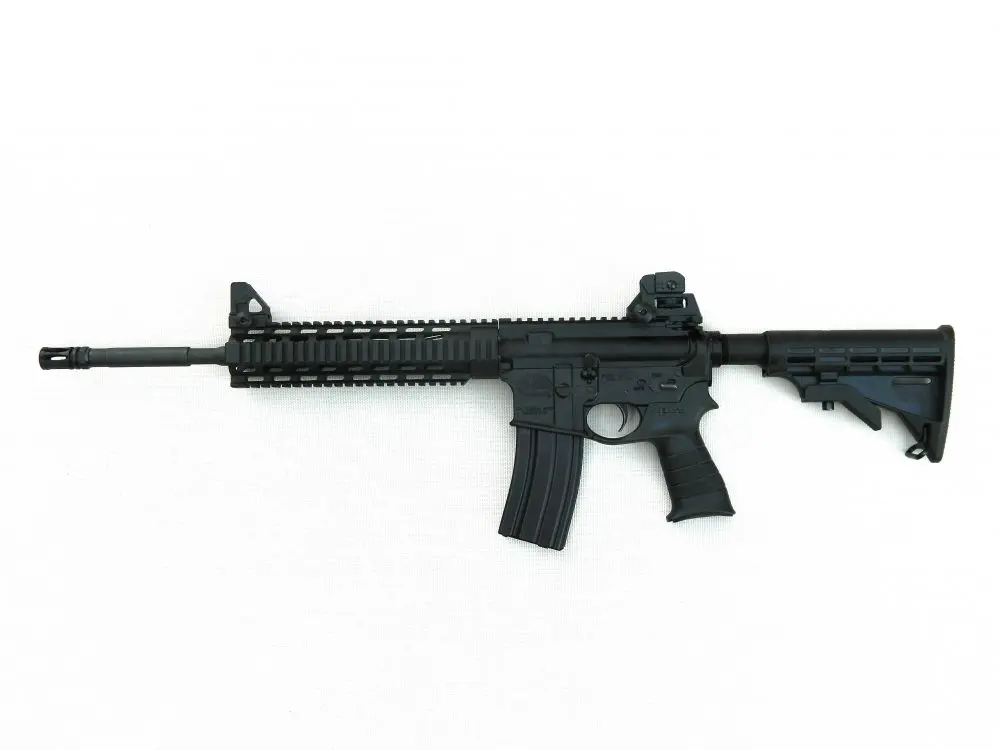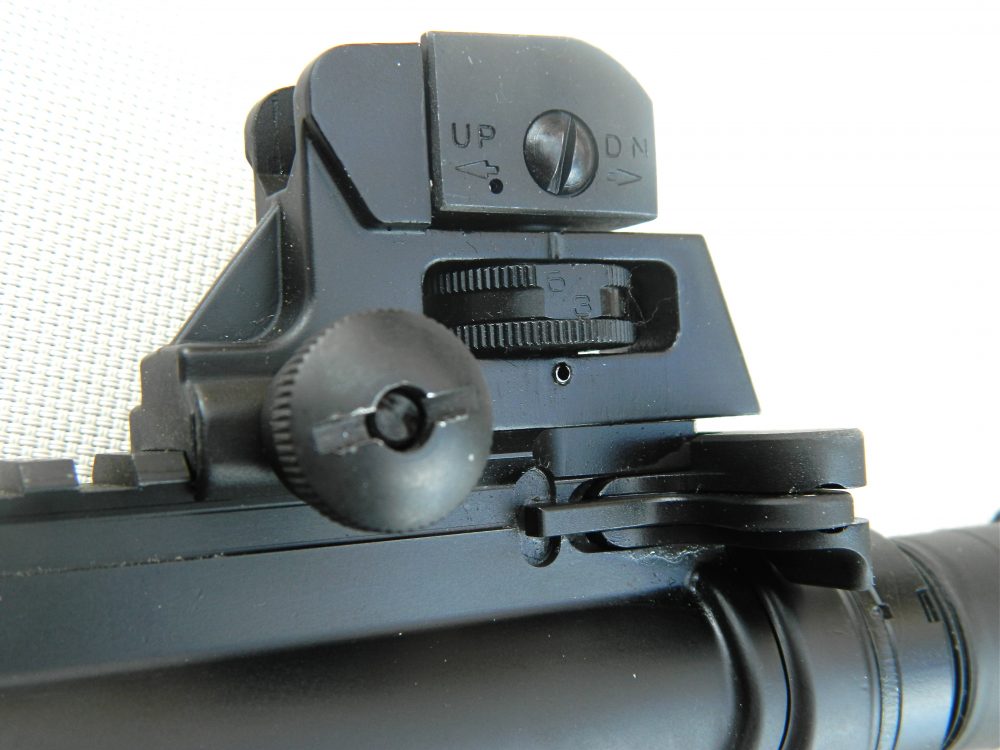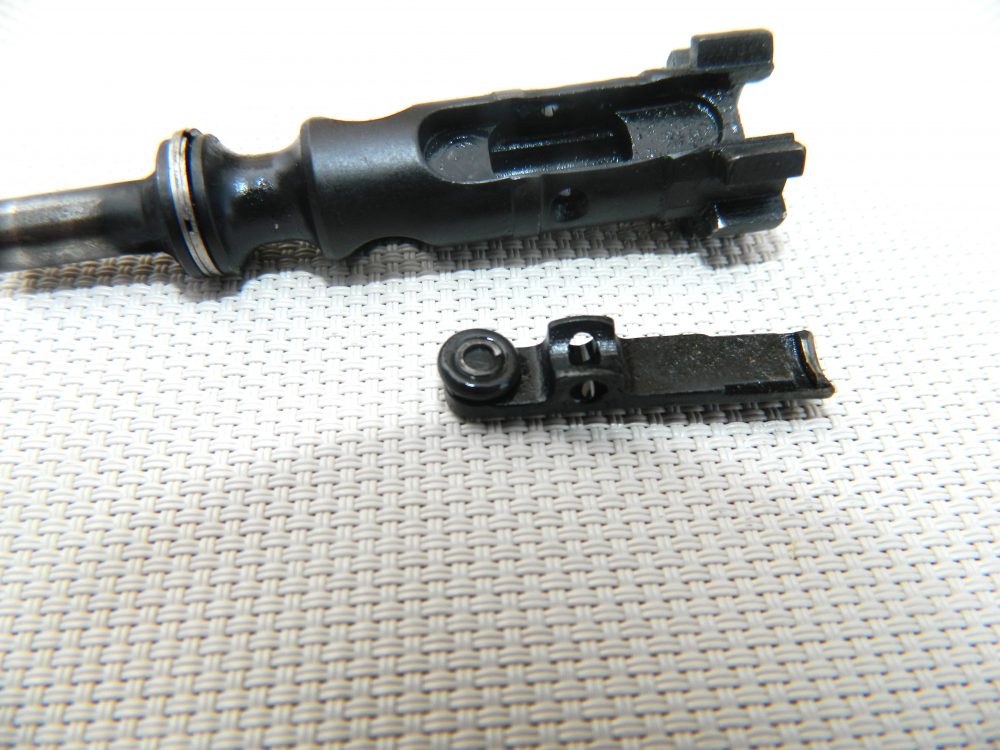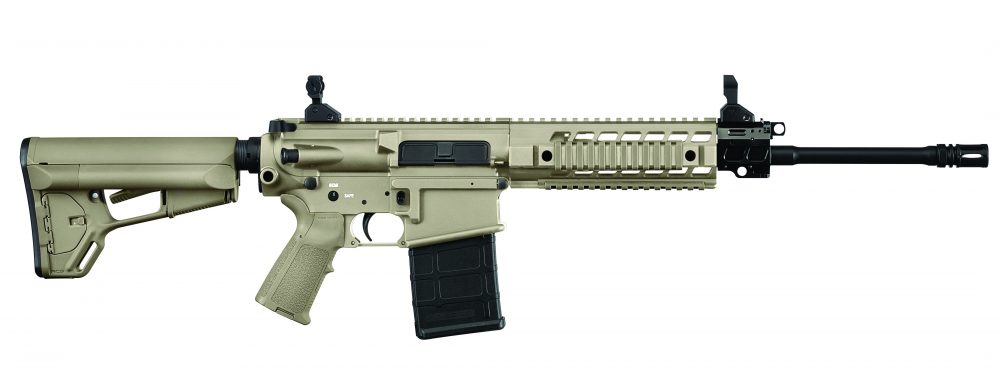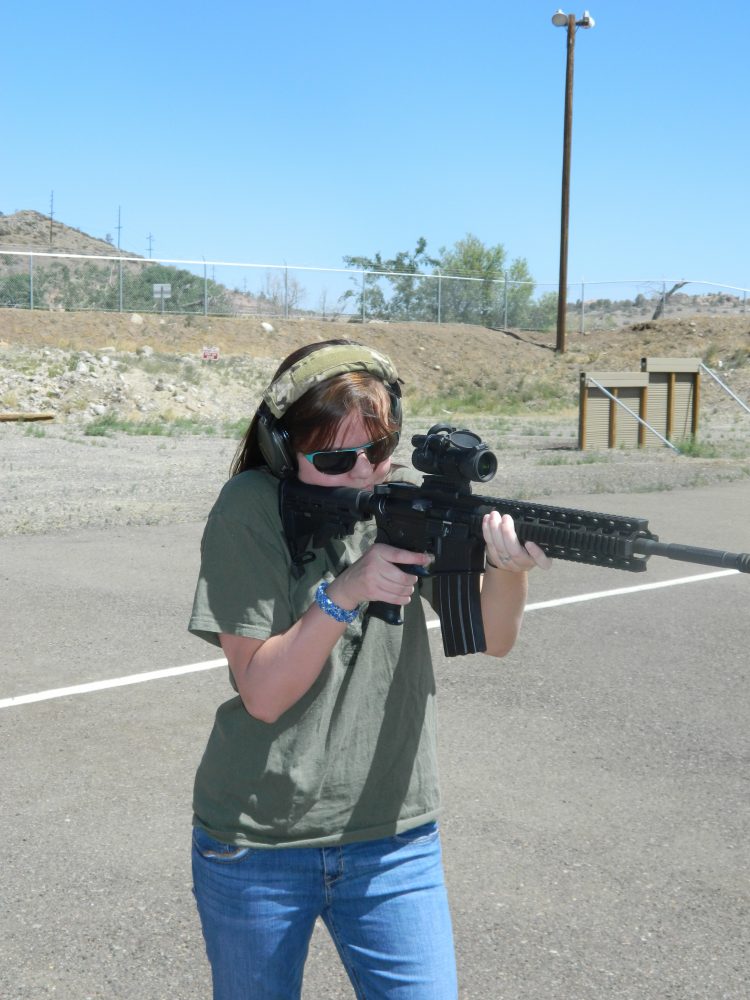
Founded in 1919, O.F. Mossberg & Sons is America’s oldest family-owned firearms manufacturer, as well as one of its most successful.
Probably best known for its slide-action shotguns—most notably the 500/590 series—Mossberg also produces semiautomatic shotguns, semi-auto .22 rifles, lever-action rifles chambered in .30-30 Winchester, and bolt-action rifles chambered in .308 Winchester. Mossberg has also gotten into the AR market with several versions of their MMR (Mossberg Modern Rifle) Tactical.
Every MMR Tactical has a flattop upper and free-float quad rail. The only differences in the eight different models have to do with whether a stock is fixed or collapsible, does or does not come with removable iron sights, and magazine capacity. The rifles ship in a foam-lined hard case with one magazine.
Table of Contents
MMR MODEL 65014
The Model 65014 received for this evaluation includes removable iron sights and a six-position collapsible stock. The M4 profile barrel is 16.25 inches long with a 1:9 twist, is chambered for 5.56x45mm NATO, and uses an A2-type flash hider. The barrel is not chrome lined. The quad rail has approximately 7.5 inches of useable space on each rail. Rail slots are not “T” marked. Weight empty is 7.5 pounds.
The pistol grip is a Stark SE-1, which has an oversize trigger guard built in. The six-position stock utilizes a commercial size receiver extension (buffer tube).
To my delight, the MMR does not have a forward assist. This helps keep the cost down in terms of machining, parts and assembly time. And while I have seen problems compounded by using a forward assist, I have yet to see a problem solved by using it. In my opinion, it will not be missed. The charging handle is slightly oversized for one-hand manipulation (though not as prominent as the excellent BCM Gunfighter Charging Handle).
The first thing I did when I received the Mossberg MMR was pull the bolt carrier. Over the years, I have seen manufacturers of some economically priced AR-type rifles cut corners with the bolt carrier. This includes not staking the gas key properly—or not at all—and using the wrong extractor spring and insert.
MMR comes with Stark pistol grip with built-in oversized trigger guard.
I was pleased to find that the gas key was properly staked in place, the correct five-coil extractor (for a 16-inch barrel carbine) was used, along with the correct (black) insert and even the Crane “O” ring.
Additionally, the bolt is Magnetic Particle Inspected (MPI), something found mostly in higher-end rifles.
NEGATIVE FEATURES
Besides the sling loop at the rear of the stock, there is no other location on the MMR to attach a sling. I subscribe to the belief that a sling on a rifle is akin to a holster for a pistol. To rectify the problem, I placed a Troy Industries 360 Rail Mount for a socket-type sling stud on the left rail about two inches forward of the lower receiver. For a second mounting point, I added a Troy Professional Grade Rifle Receiver Sling Adapter on the receiver extension. I used a Blue Force Gear two-point sling.
Another problem—at least for me—was the Stark pistol grip. The grip is comfortable and, to its credit, the built-in oversize trigger guard fills in the annoying gap between the trigger guard and pistol grip. While I had no trouble flicking the safety off with my thumb, the grip is so large and places the web of the hand so low that I had to release my grip and reposition the carbine in my hand in order to put the safety back on. The problem, of course, is exacerbated when wearing gloves.
Version of MMR evaluated came with adjustable, removable sights.
The idea behind the Stark pistol grip has merit, but in my opinion is poorly executed. Luckily the pistol grip can be easily replaced by any number of aftermarket grips (keeping in mind the trigger guard will also need to be replaced).
Finally, the MMR did not come with any type of covers for the quad rail or flattop. A cover not only increases comfort if holding on to the rail, but more importantly protects it. If a spot on the rail gets dinged up, that location is essentially useless—especially if using slide-on type accessories, e.g., the TangoDown vertical foregrip. After a quick call to Brownells, I had ladder-type rail covers for all the rails and the flattop upper.
Mossberg is, of course, not the only manufacturer to ship rifles in this manner. I believe all manufacturers would be well advised to include these inexpensive yet essential covers with every rifle shipped. If desired, the owner can always upgrade to another type of cover of his choosing.
MMR has a slightly oversized charging handle.
RANGE TIME
About a week after I received the MMR, I was invited to attend a “high-intensity” carbine course. From past experience, I know that if a gun is going to go down, it’s while running it hard at a class, so I jumped at the opportunity. In fact, I envisioned a combo article evaluating the course and the carbine at the same time.
Unfortunately, the course turned out to be anything but high intensity, and I barely fired 200 rounds over the course of two days. I try to turn any class into a learning experience, but the only thing I learned at this course was that as time has passed, my belly has gotten larger, my hips have gotten smaller, and it may be time to consider a battle belt at carbine courses so I don’t have to keep hitching my gun belt up from the weight.
At my home range the following weekend, I ran the Mossberg hard, working various drills from different shooting positions from 50 yards and in.
I used a total of 17 different loads from manufacturers including American Eagle, ASYM, Black Hills, Federal, Hornady, Summit, Winchester and a handload. Bullets ranged in weight from 55 to 77 grains.
Mossberg has a true 5.56x45mm chamber. Twist rate is 1:9.
To evaluate how well the MMR would run with a variety of magazines, I used mags from Bravo Company, Fusil, Lancer, Magpul, Tango Down and USGI.
I removed the iron sights that came with the MMR and mounted an Aimpoint PRO red-dot sight.
I sight my carbines in with a 50/200-yard zero. My first group was two inches right and two inches high. Eight clicks down and eight clicks left on the PRO had the MMR putting the next five rounds into the one-inch dot on the bull’s-eye target I zeroed on.
Accuracy was good with all loads tested, with all going between 1.75 and 2.25 MOA, but the MMR had a definite preference for 55-grain loads. The best single group fired at 50 yards, slow fire from prone was Black Hills 55-grain FMJ, with five shots that could be covered by a dime with change left over.
Quad rail is free floating.
MALFUNCTIONS
I experienced six malfunctions with the MMR. Two of these were failures to feed with Winchester 45-grain JHP loads when the bullet was pushed back into the case and the case wedged onto the feed ramp. One of these occurred while using a Fusil USA magazine and the other with a Lancer mag. I believe this was an ammo problem more than the magazines.
The other four were failures to feed with TangoDown ARC magazines—all with Black Hills 77-grain Match loads. I have no explanation for this, as both the ammo and mags run reliably in other rifles.
Very early first generation PMAGs would occasionally release, but not drop free, however no problem was experienced with later generation renditions.
I had run a couple of clean patches through the bore when the rifle was received, to remove any trace of oil left by the manufacturing process. The carbine was properly lubed prior to the “tactical” class mentioned above. This was the only maintenance performed on the MMR during the evaluation, with just over 700 rounds fired in total.
Rails are not “T” marked.
CONCLUSIONS
For someone looking for a carbine that meets or exceeds milspec, the MMR is not it, as it lacks a chrome-lined barrel, has a commercial receiver extension, etc. But the truth is that the casual plinker or hunter does not require the same specs in a rifle as one that will receive hard use in the hands of a peace officer or someone attending high-round-count carbine courses. Additionally, the MMR is assembled with parts that come closer to milspec than some other variants currently on the market and, based on the test rifle, I believe it’s good to go in any capacity the owner chooses to employ it.
The MMR features “little” things that are actually very important, such as the MPI bolt, properly staking the gas key, using the correct extractor parts, and chambering it for 5.56mm instead of .223. One manufacturer marks their rifles “.223/5.56” as if they are the same thing—they’re not.
An acquaintance I showed the MMR to groaned, “Oh great! Another AR. Isn’t the market already saturated with them?” My reply is that to my way of thinking, the market won’t be saturated until there is at least one AR-pattern rifle in every home. Not to mention that competition is a good thing.
Bolt uses correct five coil recoil spring, black insert, and Crane “O” ring.
Something else to consider: the more people who buy ARs, regardless of the reason or type of shooting they’re into, the harder it will be for the anti-gun crowd to make the case that the rifles “are not good for anything but killing people.”
And as strange as it may sound to readers of S.W.A.T., there are people who have not heard of Bravo Company, Noveske, LaRue, etc., and may consider buying an MMR simply because they are familiar with the Mossberg name.
All things considered, I think Mossberg got this one right. With a suggested retail price of $950, the MMR is a good entry-level carbine. Checking the Internet, I have seen some dealers offering them for as low as $650. Taking into account what you get as standard equipment with the MMR, that represents a great bargain!
SOURCES:
O.F. Mossberg & Sons, Inc.
(203) 230-5300
www.mossberg.com
Aimpoint Inc.
(877) 246-7646
www.aimpoint.com
Brownells Inc.
(800) 741-0015
www.brownells.com
Troy Industries
(866) 788-6412
www.troyind.com
